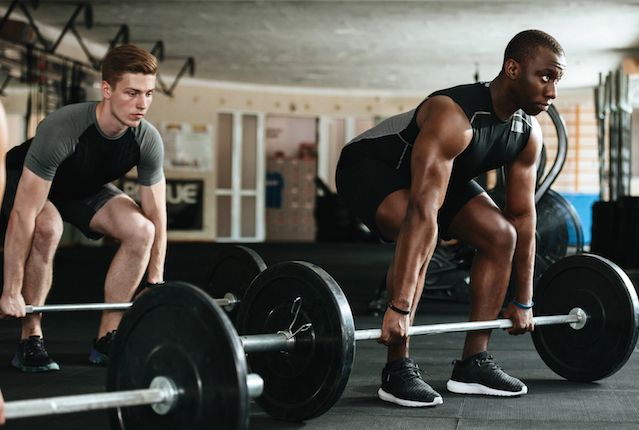May 22, 2024Study: Higher training volume leads to increased size, not strength
Which way is better to improve strength in athletes through weight training — high reps and low weight or low reps and high weight?
A new study explores this idea. The study, which was presented at the International Journal of Exercise Science: Conference Proceedings, aimed to determine the effects of two different lower-body training programs.
 A recent story from Men’s Health detailed the study and its findings. Below is an excerpt from the Men’s Health story.
A recent story from Men’s Health detailed the study and its findings. Below is an excerpt from the Men’s Health story.
One group focused solely on strength (S), while the other combined strength and hypertrophy (SH). The researchers investigated maximal strength, muscle size of the vastus lateralis (VL, the muscle on the side of the thigh), and patellar tendon thickness (PTT, the tendon that holds the patella in place) in untrained men over a six-week period.
The Methods
Twenty-seven healthy, untrained men were randomly assigned to either the strength-focused group or the combined strength and hypertrophy group. Before and after the training period, the participants performed a one rep max (1RM) leg press test. Ultrasonography (ultrasound) was used to measure the VL at full extension and the PTT at knee flexion.
- The strength (S) group completed 16 training sessions that included maximal isometric knee extensions and three sets of one rep at 90% 1RM on a leg press.
- The strength and hypertrophy (SH) group performed the same training but added three sets at 45% of their 1RM for as many reps as possible, stopping when they had two reps left in the tank.
- Training loads were increased every two weeks for both groups.
» ALSO SEE: UR Medicine treating growing demand for Tommy John surgery
The Results
- Maximal strength (1 rep max on leg press): Both groups showed a significant increase in maximal strength after six weeks. There was no significant difference in strength gains between the two groups. Average strength increased from 599.48 lbs before training to 798.74 lbs after training.
- Patellar tendon thickness: Both groups showed a significant increase in patellar tendon thickness after six weeks. There was no significant difference in tendon thickness increases between the two groups. Average tendon thickness increased from 0.42 cm before training to 0.45 cm after training.
- Size of the VL muscle: The group combining strength and hypertrophy training showed a significantly greater increase in muscle size compared to the strength-only group. The combined training group had an average increase in muscle size of 4.62 cm². The strength-only group had an average increase in muscle size of 1.19 cm².
To read the full story from Men’s Health, click here.


